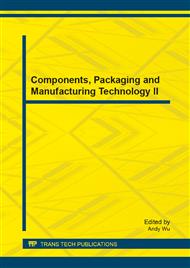p.105
p.111
p.118
p.123
p.129
p.135
p.141
p.147
p.155
Study on 3D Modeling and Flow Field Simulation of Urea-SCR Catalytic Converter
Abstract:
In this paper, the study on 3D modeling and flow field simulation of Urea-SCR system which installed on the tested diesel engine. After the research of Urea-SCR reaction theory and the time scale of each physical and chemical reaction process, the numerical model of SCR system was established. Through the analysis of the factors such as velocity, temperature and pressure of flow field at characteristic operating points, verifying the reliability of the model, which has important guiding significance to the structure design of Urea-SCR system.
Info:
Periodical:
Pages:
129-134
Citation:
Online since:
February 2014
Authors:
Keywords:
Price:
Сopyright:
© 2014 Trans Tech Publications Ltd. All Rights Reserved
Share:
Citation:


